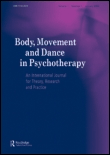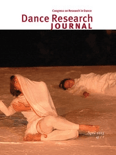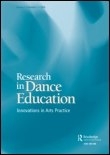
Body Movement and Dance in Psychotherapy
Scope & Guideline
Bridging Dance and Psychotherapy for a Healthier Tomorrow
Introduction
Aims and Scopes
- Embodied Therapeutics:
The journal emphasizes the therapeutic potential of dance and movement, exploring how these modalities can facilitate emotional, psychological, and physical healing. - Interdisciplinary Approaches:
Research published in the journal often draws from various disciplines including psychology, sociology, and the arts, fostering a holistic understanding of movement-based therapies. - Cultural and Social Contexts:
The journal addresses the cultural implications of dance movement therapy, showcasing practices from diverse backgrounds and their relevance in contemporary therapeutic settings. - Research and Evidence-Based Practices:
A strong focus on empirical research, including quantitative studies and systematic reviews, is evident, highlighting the effectiveness of dance movement therapy across different populations. - Innovation in Therapeutic Techniques:
The journal promotes innovative practices and methodologies within dance movement therapy, encouraging practitioners to explore new ways of integrating movement into therapeutic settings.
Trending and Emerging
- Trauma-Informed Practices:
There is a growing emphasis on trauma-informed approaches within dance movement therapy, focusing on how movement can aid in processing and healing from trauma. - Culturally Informed Practices:
Research exploring the intersection of culture and dance therapy is on the rise, emphasizing the importance of culturally relevant practices in therapeutic settings. - Online and Remote Therapeutic Practices:
The adaptation of dance movement therapy to online platforms has gained traction, particularly in response to the COVID-19 pandemic, highlighting the need for innovative approaches to therapy. - Integration of Technology:
Emerging themes include the exploration of technology's role in therapy, such as the implications of the metaverse for dance movement therapy practices. - Focus on Social Justice and Activism:
Increasingly, the journal addresses themes of social justice and activism, exploring how dance movement therapy can contribute to broader societal change and personal empowerment.
Declining or Waning
- Traditional Dance Forms:
There has been a noticeable decrease in the exploration of traditional dance forms within therapeutic contexts, as the journal shifts towards more contemporary and integrative practices. - Single-Disciplinary Studies:
Research that focuses solely on dance or movement without integrating psychological theories and practices appears to be less frequent, indicating a trend towards interdisciplinary approaches. - Static Models of Therapy:
The journal has seen less emphasis on static models of dance movement therapy, with a preference for dynamic, evolving frameworks that adapt to the needs of clients. - Limited Focus on Children:
Research specifically targeting dance movement therapy for children has diminished, possibly reflecting a broader trend towards adult-focused therapeutic practices.
Similar Journals

AMERICAN JOURNAL OF DANCE THERAPY
Advancing Knowledge in Dance TherapyAMERICAN JOURNAL OF DANCE THERAPY, published by KLUWER ACADEMIC-HUMAN SCIENCES PRESS, stands as a pivotal platform in the field of dance therapy, bridging the gap between creative arts and mental health disciplines. Since its inception in 1977, this journal has fostered a deeper understanding of the therapeutic benefits of dance, showcasing empirical research, case studies, and innovative practices that promote emotional and psychological well-being. As of 2023, it holds a Q4 category in Psychiatry and Mental Health, with a Scopus rank of #417 out of 567 journals in this area, reflecting its unique contributions amidst a competitive landscape. With an emphasis on accessibility for professionals and researchers, the journal serves as an essential resource for those devoted to the advancement of dance therapy, offering insights and findings that can influence both clinical practice and academic inquiry. Join a growing community of scholars and practitioners dedicated to exploring the transformative power of movement in healing and therapeutic settings.

DANCE RESEARCH JOURNAL
Diving Deep into the World of Dance Scholarship.DANCE RESEARCH JOURNAL, published by Cambridge University Press, is a premier platform for the exploration and dissemination of scholarly work in the realm of dance studies. Since its inception in 1975, this journal has significantly contributed to the understanding of dance as a vital form of cultural expression and a dynamic art form, holding a commendable position in the Q2 category for Visual Arts and Performing Arts with an impressive Scopus rank of #68 out of 667, placing it in the 89th percentile within its field. The journal features rigorous research articles, critical essays, and groundbreaking studies that foster innovative dialogue among researchers, educators, and practitioners alike. While the journal operates without open access options, its invaluable insights and critical examinations make it an essential resource for anyone seeking to deepen their understanding of dance's multifaceted roles in society. Engage with the DANCE RESEARCH JOURNAL to connect with the latest developments and scholarly conversations that shape the future of dance-related research.

International Journal of Sports Physical Therapy
Inspiring breakthroughs in physical therapy and sports medicine.Welcome to the International Journal of Sports Physical Therapy, a premier platform dedicated to advancing the field of sports therapy and rehabilitation. Published by the NORTH AMER SPORTS MEDICINE INST-NASMI, this open access journal has been vital in disseminating state-of-the-art research since its inception in 2011. With an ISSN of 2159-2896, it boasts a commendable standing within the academic community, achieving a Q2 ranking in 2023 across multiple categories, including Orthopedics and Sports Medicine, Physical Therapy, and Rehabilitation. Spanning diverse topics relevant to sports physical therapy, this journal serves as an invaluable resource for researchers, clinicians, and students alike, promoting best practices and innovative techniques in the field. By maintaining a commitment to high-quality peer-reviewed content, it not only contributes significantly to the existing body of knowledge but also fosters collaboration among professionals seeking to enhance patient care and rehabilitation outcomes.

Konsultativnaya Psikhologiya i Psikhoterapiya-Counseling Psychology and Psychotherapy
Transforming Lives with Evidence-Based InsightsKonsultativnaya Psikhologiya i Psikhoterapiya-Counseling Psychology and Psychotherapy is a premier open-access journal published by Moscow State University of Psychology & Education, dedicated to advancing the fields of clinical psychology, developmental psychology, and psychotherapy. Since its inception in 2015, this journal has provided a platform for innovative research and comprehensive reviews, catering to a diverse audience of researchers, practitioners, and students interested in mental health and counseling disciplines. With a notable presence in databases such as Scopus, the journal has been recognized for its contributions, ranking within the Q4 category for Clinical Psychology and Developmental and Educational Psychology in 2023, while achieving a respectable Q3 ranking in Health (social science). The journal's commitment to accessibility fosters broad dissemination of knowledge, allowing for collaborative dialogue across borders. As it continues to thrive in the competitive landscape of psychological research, your engagement with this journal could greatly enhance your understanding of contemporary issues in counseling psychology and psychotherapeutic practices.

MOVEMENT DISORDERS
Driving Collaboration in Neurological ResearchMOVEMENT DISORDERS, published by Wiley, stands as a premier outlet for cutting-edge research in the field of neurology, particularly focusing on the various aspects of movement disorders. With both its ISSN (0885-3185) and E-ISSN (1531-8257) identifiers, this journal is at the forefront of neurological research, holding a remarkable impact factor and recognized in the top quartiles (Q1) of the disciplines of Neurology and Clinical Neurology as of 2023. The journal boasts an impressive Scopus ranking, placing it in the top 8 out of 192 for Neuroscience-Neprology and 19 out of 400 for Medicine-Clinical Neurology, reflecting its high relevance and influence in the field. Released quarterly since its inception in 1986 and continuing through 2024, MOVEMENT DISORDERS publishes a mix of original research articles, reviews, and case reports that catalyze innovation and foster collaboration among researchers, healthcare professionals, and students dedicated to understanding and treating movement disorders. As a non-open access journal, it nevertheless offers valuable insights that are essential for the advancement of knowledge in neurology, making it a critical resource for anyone invested in this challenging and evolving field.

Art Therapy
Exploring the Healing Power of CreativityArt Therapy is a leading academic journal published by ROUTLEDGE JOURNALS, TAYLOR & FRANCIS LTD, dedicated to exploring the intersections of art and therapy since its inception in 1983. As a crucial resource in the fields of Clinical Psychology and Complementary and Manual Therapy, it is positioned in the Q3 quartile for Clinical Psychology and Q2 quartile for Complementary and Manual Therapy based on the 2023 category rankings. With its ISSN 0742-1656 and E-ISSN 2159-9394, the journal continues to be an important platform for researchers, professionals, and students seeking to enhance their understanding of therapeutic practices through artistic expression. Although it is not an Open Access journal, its accessibility through institutional subscriptions ensures a wide dissemination of innovative research and findings. The journal's commitment to advancing knowledge in art therapy makes it a vital addition to any scholarly collection, fostering ongoing dialogue and development in this dynamic field.

Research in Dance Education
Pioneering New Perspectives in Dance and EducationResearch in Dance Education, a prestigious journal published by Routledge Journals, Taylor & Francis Ltd, is an essential resource for those engaged in the dynamic fields of dance and education. With an ISSN of 1464-7893 and an E-ISSN of 1470-1111, this journal stands out for its commitment to advancing scholarly discourse in dance and its pedagogical approaches. Since its inception, it has been an invaluable platform for researchers, educators, and practitioners interested in the intersection of dance and education, disseminating innovative research and theoretical reflections that span diverse cultural and educational contexts. With an impressive Q1 ranking in Visual Arts and Performing Arts for 2023 and a solid Q3 ranking in Education, it clearly demonstrates its impact within these academic domains. Spanning from 2010 to 2024, the journal reflects its ongoing dedication to fostering scholarship that critically examines contemporary practices and education strategies in dance. Researchers and students alike will benefit from its range of articles, providing insights not only into instructional methodologies but also into the cultural significance of dance as a form of expression and learning.

Revista de Psicoterapia
Fostering Interdisciplinary Collaboration in PsychotherapyRevista de Psicoterapia is a prominent scholarly journal dedicated to the fields of psychotherapy and psychological practice, published by REVISTA PSIQUIATRIA & PSICOLOGIA HUMANISTA, S L. With its ISSN 1130-5142 and E-ISSN 2339-7950, the journal serves as a vital resource for researchers, practitioners, and students who seek to explore innovative therapeutic practices and advancements in the field of mental health. Although specific impact metrics like HIndex or Scopus rankings are currently unavailable, the journal is recognized for facilitating meaningful discourse on psychotherapy, showcasing empirical research, clinical studies, and theoretical advancements. It aims to promote evidence-based practices and interdisciplinary collaboration in the mental health community. As an essential platform in psychotherapy research, Revista de Psicoterapia fosters an understanding of psychological phenomena while addressing contemporary challenges in psychotherapy, making it indispensable for anyone committed to the advancement of psychological well-being.

Biomedical Human Kinetics
Pioneering Discoveries in Human Performance and TherapyBiomedical Human Kinetics, an esteemed academic journal published by SCIENDO, focuses on the intricate intersections of human movement, rehabilitation, and the study of physical therapies. Since its transition to an open access model in 2009, this journal has become a vital platform for sharing groundbreaking research and innovative methodologies in the fields of Orthopedics, Sports Medicine, and Physical Therapy. With an ISSN of 0043-9630 and an E-ISSN of 2080-2234, it operates out of Poland, providing global access to high-quality research. The journal’s standing in 2023 is notable, ranking in the Q3 category for both Orthopedics and Sports Medicine and Physical Therapy, Sports Therapy, and Rehabilitation, reflecting its commitment to fostering academic discourse within these important and evolving domains. Furthermore, with Scopus rankings placing it in the 36th percentile in its categories, Biomedical Human Kinetics is recognized for its contributions to the academic community. As it converges research efforts from 2016 to 2024, this journal serves as a cornerstone for researchers, professionals, and students dedicated to enhancing human health and performance through informed scientific exploration.

Psychotherapie
Connecting Research with Real-World PracticePsychotherapie is a pivotal academic journal dedicated to the exploration and advancement of clinical psychology, published by the esteemed Springer. Since its inception in 2022, this journal has established a significant footprint in the field, currently positioned in the Q3 category for Clinical Psychology in 2023, as well as being recognized for its Scopus ranking within the top half of its category. This valuable resource features a broad scope of peer-reviewed articles aimed at both theoretical and practical developments in psychotherapy, making it a vital platform for researchers, professionals, and students alike. While the journal is not open access, it maintains a commitment to disseminating high-quality research that can influence best practices and contribute to the ongoing discourse in psychology. The journal's editorial objective is to connect scientific research with clinical practice, ensuring insights garnered from emerging studies are readily available to enhance therapeutic outcomes. Located in the USA with a strong presence in Germany, Psychotherapie promises to be an essential resource for anyone keen on innovative therapeutical approaches and psychological research.